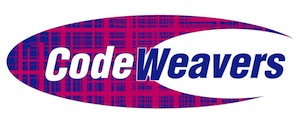CrossOver Linux Review

For about four months now, I have been using the Ubuntu Linux operating system full-time on both my desktop and notebook computer. A few weeks into this experience, I wrote an article sharing some of my findings about the Windows to Linux migration process. One of the main concepts that I addressed in this article was the concept of finding Linux-based alternatives to one’s current Windows software. However, I also covered the fact that there are some software applications that simply do not have worthy alternatives, and for this reason suggested that Linux newcomers look into the WINE package to run Windows software on Linux. However, there is no denying that WINE is “at best a bit sketchy” (as said by a commentator).
When I first started using Linux, I had heard about the CodeWeavers CrossOver software package that worked to run Windows applications in a Linux environment. However, I could not justify purchasing it (retail pricing starting at $40) because in my eyes, it did not offer any value. After all, it was based on the WINE project, and I saw it pointless to purchase something that was simply a re-branded version of something that was freely available. More recently, though, a few people have been telling me about the wonders of CrossOver and how it was so much more than the branded WINE package that I thought it was. For this reason, I decided to take the plunge and purchase CrossOver Linux Standard in order to run a few Windows applications in Linux.
Upon installing the pre-compiled package, I was intrigued by the “bottle” concept that was employed in CrossOver. You see, in order to maximize comparability and isolate instabilities, CrossOver allows you to create separate “bottles” that have individualized WINE settings. For example, I currently have a “bottle” that contains the mIRC IRC client. When I install additional software packages down the road, I will install them in separate bottles. Then, if any Windows-based software opts to go haywire down the road, any errors or damage will be isolated to that bottle and will not effect other software. Simply put, this leads to optimum stability. Additionally, by allowing individual applications to reside within their own bottles, CrossOver allows for the best possible comparability by eliminating any software conflicts and allowing for optimal operating system environments to be used.
More importantly, however, is the level of control that the end-user has over the bottles. I say this because the bottle manager allows for bottles to be forced to shut-down in the event of error, and allows for applications and runtime to be installed and uninstalled. Moreover, the implementation of a task manager extends the end-users level of control.
In retrospect to installing software in WINE, installing Windows-based applications in CrossOver is amazingly simple. The easy-to-use installation wizard allows you to create a new bottle with the recommended settings for your applications and to go about the installation process. These pre-configured settings for supported (and non-officially community-supported) software reduces the need for “trial and error” when installing software.
One of the best things about CrossOver is the fact that it instantaneously updates the “Applications” menu under Gnome, giving the end-user easy access to their applications. While this seems somewhat basic of a feature, it is definitely something that I have yet to see implemented in WINE.
Perhaps the most outstanding feature is the import and export feature that CrossOver offers, allowing the user to export a bottle and the included software and later restore from a backup. I took advantage of this feature earlier today in order to copy a bottle from my laptop over to my desktop, and was highly impressed with how well it worked. This concept of easy backups and portability is important to me, because it means that CrossOver is versatile enough to handle my day-to-day needs.
All in all, while CrossOver does not offer a greater level of comparability in comparison to WINE, the fact remains that CrossOver is much more user-friendly and allows for higher levels of stability. While I definitely feel that CrossOver is worth the $40 price-tag for the standard version (the professional version includes CrossOver Games and covers support fees), a few reviews that I read had told me that CodeWeavers more or less had constant discounts and promotions on their software. Through RetailMeNot, I was able to take advantage of said discount in order to get 40% off of the retail price; landing my total invoice at just over $23.
So, if you’re looking for a solution for running your Windows-based applications under Linux, CodeWeavers offers a stable and solid product at a reasonable price, and is well worth looking into.